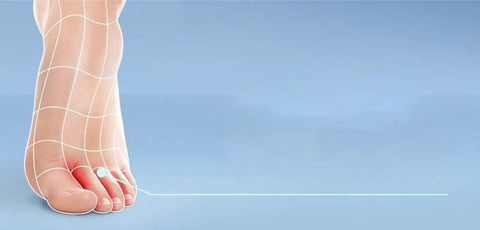
Athlete’s foot (also known as tinea pedis) is a common fungal infection that affects the skin on the feet.1
It is very contagious2 and occurs mostly between the toes (called an interdigital pattern) and less commonly on the soles of the feet (called a moccasin pattern).3
An itchy, red rash in the spaces between the toes is a classic sign of athlete’s foot. The skin can be pale, moist, and soft. Other signs include skin with a scaly, cracked, and peeling appearance.1,2
There may be a stinging or burning sensation,1,2 or notice an unpleasant odour.2
If left untreated, athlete’s foot can spread to other areas of the foot.3
Athlete’s foot is caused by a group of fungi called dermatophytes.1 They thrive in warm and moist environments like showers and changing rooms.1
The feet can become infected by direct skin-to-skin contact with another person who has athlete’s foot or through contact with contaminated surfaces or objects.1 The fungus can also spread from the feet to other parts of the body.2
Anyone can get athlete’s foot (although it is rare in children3), but it is more likely to develop when feet are exposed to warm and moist conditions.1 Factors that increase the risk of infection include:
Athlete’s foot can usually be resolved with an over-the-counter antifungal treatment to get rid of the infection.1
Topical antifungal treatments are applied to the affected area, usually once or twice a day for 1 to 6 weeks (depending on the type of treatment).2,3 It is important to apply the antifungal treatment as directed, because the fungus may still be present even after the symptoms completely disappear.2
A simple maintenance routine can help to keep the skin on the feet healthy.5
Scholl’s range of footcare options are available in major retailers and pharmacies in Australia, including Coles, Woolworths, Chemist Warehouse, and Priceline.
Always read the label. Follow the directions for use. If symptoms persist, talk to your health professional.